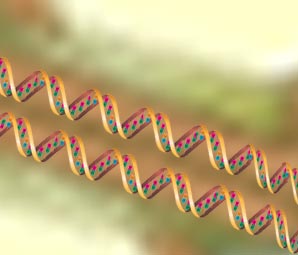

In this type of map, genes or other DNA fragments are assigned to their respective chromosomes, with distances measured in base pairs.
In situ hybridization is a technique that puts an observable label, like one that's fluorescent or radioactive, by tagging the DNA. The markers in the chromosomal map can be physically associated with particular bands, primarily by in situ hybridization.
After the labeled probe binds to its complimentary DNA strand in a chromosome, the location of that DNA strand can be detected and found.

Genetic markers defined by traits observable only in whole organisms can be located using chromosomal maps, similar to genetic linkage mapping. Chromosomal maps are considered to be physical maps because they are based on estimates of physical distance despite the fact that only an estimation can be made on the number of base pairs on a sequence.
Due to improvements on fluorescence in situ hybridization (FISH), scientists can see DNA sequences that lie as close as 2 to 5 Mb, as opposed to before when DNA sequences could be located around a region of about 10Mb.
Map resolution can be increased to around 100 000bp is chromosomes at interphase, at that point they are less compact, are used and modifications to in situ hybridization are made. Further technology developments for banding refinement might allow chromosomal bands to be associated with specific amplified DNA fragments. This means an improvement that would make observing the physical traits linked to chromosomal abnormalities easier and would therefore make analyzing them [the chromosome and traits] easier.